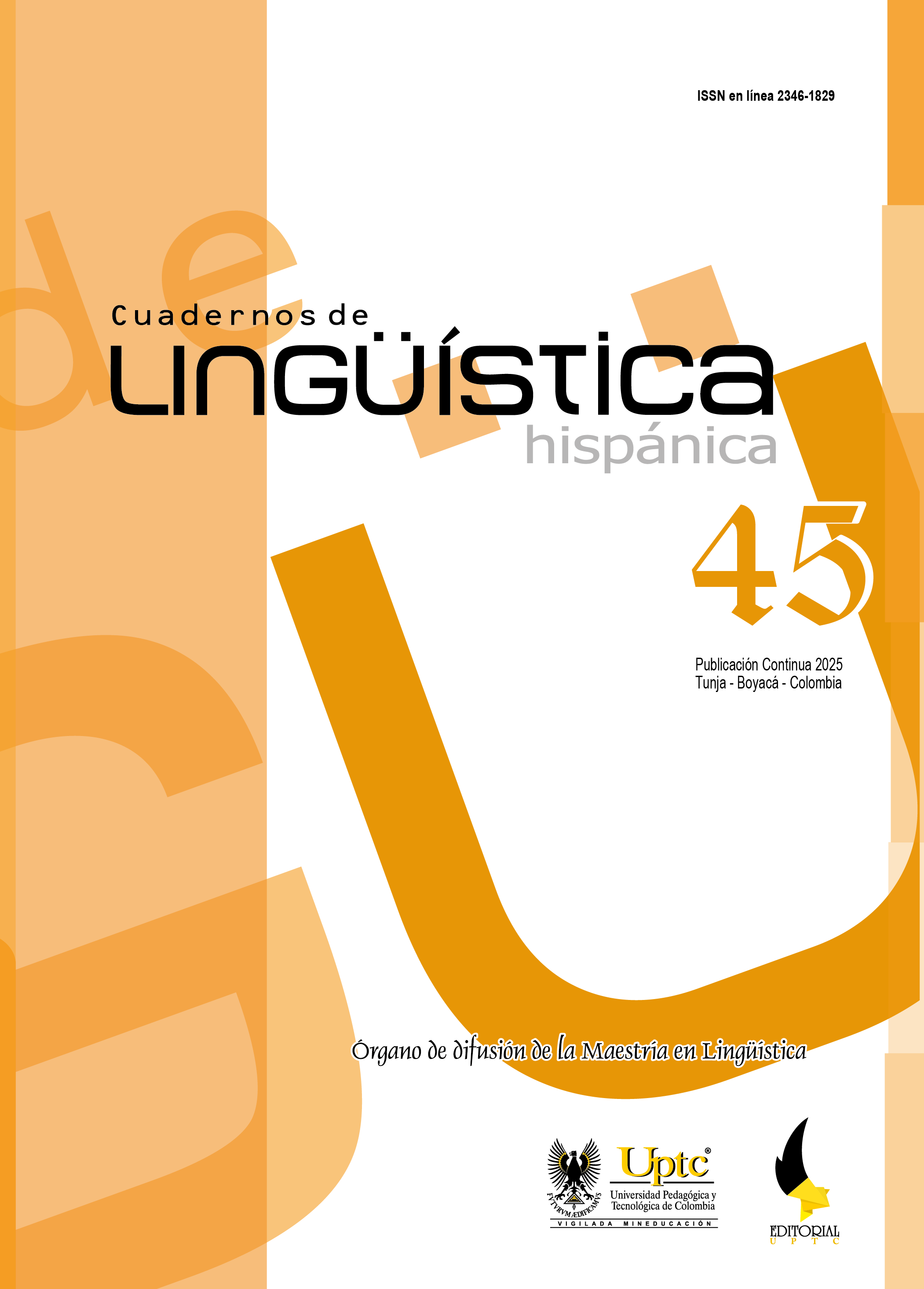Fostering Intercultural Competence in Teacher Education: A Tri-National Co construction Dialogue Experience

Abstract
This article analyzes, through an interpretive case study, the usefulness of an experiential learning strategy intercultural co-construction dialogues—to help student teachers from three countries improve their IC competencies. The study was framed into an interpretative case study. The fifteen participants engaged in dialogical activities over a four-month period using digital telecollaboration technologies and generated written and oral data that were coded in a collaborative manner. The analysis was based on Byram’s (2021) intercultural communicative competence (ICC) model. The study measured the participating students’ engagement primarily in two components of the ICC: intercultural attitudes and critical cultural awareness. The discussion highlights students’ growth in key elements of critical cultural awareness such as suspension of judgment, ethnorelative perspectives, and glocal sensibilities. It is concluded that the intercultural co-construction dialogue strategy fostered the appreciation of global and local cultural knowledge and promoted critical awareness of social settings, highlighting the need for intercultural models in teacher education to support culturally sustainable pedagogies.
Keywords
Intercultural competence, telecollaboration, initial teacher education, co-construction dialogues, cultural awareness, intercultural attitudes
References
- Alghasab, M., & Álvarez-Ayure, C. P. (2021). Towards the Promotion of Intercultural Competences: Telecollaborative Conversations between Kuwaiti and Colombian English as a Foreign Language University Students. Computer Assisted Language Learning, 36(4), 555-583. https://doi.org/10.1080/09588221.2021.1934483
- Alonso, I., & Fernández, M. (2015). Practical Proposals for the Development of Intercultural Communicative Competence in EFL: What Textbooks Won’t Tell You. In M. B. Paradowski (Ed.), Productive Foreign Language Skills for an Intercultural World. A Guide (Not Only) for Teachers (pp. 163-178). Peter Lang.
- Altarejos, F., & Moya García-Montoto, A. (2003). Del relativismo cultural al etnocentrismo (y vuelta). ESE: Estudios sobre Educación, (4),
- -34.
- Álvarez Valencia, J. A., & Wagner, M. (2021). Roadblocks to Intercultural Mobility: Indigenous Students’ Journeys in Colombian Universities. Intercultural Communication Education, 4(1), 6-21. https://doi.org/10.29140/ice.v4n1.445
- Baker, W. (2012). From Cultural Awareness to Intercultural Awareness: Culture in ELT. ELT Journal, 66(1), 62-70. https://doi.org/10.1093/elt/ccr017
- Barret, M. (2013). Interculturalism and Multiculturalism: Similarities and Differences. Council of Europe Publishing.
- Bennett, M. J. (1993). Towards Ethnorelativism: A Developmental Model of Intercultural Sensitivity. In M. Paige (Ed.), Education for the Intercultural Experience (pp. 2171). Intercultural Press.
- Byram, M., Golubeva, I., Hui, H., & Wagner, M. (Eds.). (2016). From Principles to Practice in Education for Intercultural Citizenship. Multilingual Matters.
- Byram, M. & Wagner, M. (2018). Making a Difference: Language Teaching for Intercultural and International Dialogue. Foreign Language Annals, 51, 140-151. https://doi. org/10.1111/flan.1231
- Byram, M. (2009). Intercultural Competence in Foreign Languages. The Intercultural Speaker and the Pedagogy of Foreign Language. In D. K. Deardorff (Ed.), The SAGE Handbook of Intercultural Competence (pp. 321–332). Sage Publications.
- Byram, M. (2011). From Foreign Language Education to Education for Intercultural Citizenship. Multilingual Matters.
- Byram, M. (2021). Teaching and Assessing Intercultural Communicative Competence (2nd ed.). Multilingual Matters. https://doi.org/10.21832/BYRAM0244.
- Citkin, F., & Spielman, L. (2011). Transformational Diversity: Why and How Intercultural Competencies Can Help Organizations to Survive and Thrive. Society for Human Resource.
- Creswell, J.W. (2013) Research Design: Qualitative, Quantitative, and Mixed Methods Approaches (4th Ed.). Sage.
- Deardorff, D. K. (2009). The SAGE Handbook of Intercultural Competence. Sage.
- Dervin, F. (2016). Interculturality in Education: A Theoretical and Methodological Toolbox. Springer.
- Duff, P. (2008). Case Study Research in Applied Linguistics (1st Ed.). Routledge.
- Guerrero, H. & Meadows, B. (2015). Global Professional Identity in Deterretorialized Spaces: A Case Study of a Critical Dialogue between Expert and Novice Nonnative English Speaker Teachers. Profile: Issues in Teachers’ Professional Development, 17(2), 13-27. https://doi. org/10.15446/profile. v17n2.44194
- Hammer, M. R., Bennett, M. J., & Wiseman, R. (2003). Measuring Intercultural Sensitivity: The Intercultural Development Inventory. International Journal of Intercultural nRelations, 27(4), 421-443. https://doi.org/10.1016/S0147-1767(03)00032-4
- Hartmann, A. & Ditfurth, M. (2007). Introduction to English Language Teaching. Klett.
- Kramsch, C. (2020). Language as Symbolic Power. Cambridge University Press.
- Kumaravadivelu, B. (2008). Cultural Globalization and Language Education. Yale University Press.
- Kolb, D. A. (2014). Experiential Learning: Experience as the Source of Learning and Development. FT Press.
- Lebedko, M. G. (2014). Interaction of Ethnic Stereotypes and Shared Identity in Intercultural
- Communication. Procedia: Social and Behavioral Sciences, 154(10), 179-183. https://doi.org/10.1016/j.sbspro.2014.10.132
- Lincoln, Y. S., & Lynham, S. A., & Guba, E. G. (2011). Paradigmatic Controversies, Contradictions, and Emerging Confluences, Revisited. In Y. S. Lincoln & E. G. Guba (Eds.), The SAGE handbook of Qualitative Research (pp. 87-128). Sage.
- Merriam, S. B., & Tisdell, E. J. (2016). Qualitative Research: A Guide to Design and Implementation (4th ed.). Jossey Bass.
- Moeller, A. K., & Nugent, K. (2014). Building Intercultural Competence in The Language Classroom. In S. Dhonau (Ed.), Unlock the Gateway to Communication (pp. 1-18). Crown Prints.
- Porto, M., Houghton, S. A., & Byram, M. (2018). Intercultural Citizenship in the (Foreign) Language Classroom. Language Teaching Research, 22(5), 484-498. https://doi.org/10.1177/1362168817718580
- Reid, E. (2015). Techniques Developing Intercultural Communicative Competences in English Language Lessons. Procedia-Social and Behavioral Sciences, 186, 939943.
- ojas-Barreto, L., Castañeda-Trujillo, J. & Mosquera Pérez, J. (2023). Developing Intercultural Competencies. In V. Canese & S. Spezzini (Eds.), Teaching English in Global Contexts, Language, Learners and Learning (pp. 607-616). Editorial Facultad de Filosofía, UNA. https://doi.org/10.47133/tegc_ch50
- Üzüm, B., Akayoglu, S., & Yazan, B. (2020). Using Telecollaboration to Promote Intercultural Competence in Teacher Training Classrooms in Turkey and the USA. ReCALL, 32(2), 162-177. https://doi.org/10.1017/S0958344019000235
- Vo, Q. (2018). Students’ perceptions to cultivating intercultural competence activities: A case study of a Vietnamese university. ThaiTESOL Journal, 31(1), 33-48.
- Wagner, M., Perugini, D. C., & Byram, M. (Eds.). (2017). Teaching Intercultural Competence Across the Age Range: From Theory to Practice. Multilingual Matters.
- Walinski, J. (2012). Enhancing Intercultural Communicative Competence in an Online Collaborative Assessment Environment: CEFcult Project. Corpus Data across Languages and Disciplines, 55-65.
- Yin, R.K. (2003) Case Study Research: Design and Methods (3rd Ed.). Sage.
- Yu, H. (2012). Intercultural Competence in Technical Communication: A Working Definition and Review of Assessment Methods. Technical Communication Quarterly, 21(2), 168-186.
